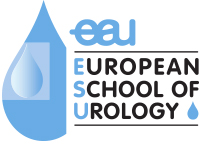Urology, like fashion, evolves at a fast pace with every season, bringing with it new trends in medical knowledge, in addition to unveiling exciting and innovative advances in surgical technology.
Here in London, BMC Urology were unable to attend this year’s Annual European Association of Urology (EAU) Congress in Milan. However, Dr Gianmarco Isgro’, an Associate Editor for BMC Urology, and his colleague, Dr Giovanni Battista Di Pierro, were in attendance and spoke to us about how the EAU Congress is an important and invaluable experience for the young urologist.
The Annual EAU Congress is a platform for the international urological community to share the latest and the most relevant knowledge with medical experts practising across the board. The use of social media also helped to impart such knowledge in an accessible manner to all attending delegates – television screens, placed on the congress walls projected live tweets and updates from congress participants. Dr Isgro’ commented that “this innovative idea made the congress even more interactive and lively“.
Another interesting point raised by Dr Isgro’ was that compared to other European based urology meetings, this year’s EUA Congress witnessed a marked increase in the number of delegates from all over Europe and beyond. This highlighted the continuing expansion and success of the EAU Society, bringing together ideas and opinions in urological medicine from all over the globe.
 As always, the meeting schedule was dense with topical plenary sessions from key opinion leaders, lively poster and video sessions and high-quality courses run by the European School of Urology (ESU). For Dr Isgro’ and Dr Battista Di Pierro, one of the attractions of the EAU Congress is that it helps to engage young urologists by encouraging them to learn and develop their skills further by hosting various sessions. Dr Isgro’ reported that the opportunity was available to assist in sessions covering several topics, including surgical complication and limits of minimally invasive surgery across the four day conference.
As always, the meeting schedule was dense with topical plenary sessions from key opinion leaders, lively poster and video sessions and high-quality courses run by the European School of Urology (ESU). For Dr Isgro’ and Dr Battista Di Pierro, one of the attractions of the EAU Congress is that it helps to engage young urologists by encouraging them to learn and develop their skills further by hosting various sessions. Dr Isgro’ reported that the opportunity was available to assist in sessions covering several topics, including surgical complication and limits of minimally invasive surgery across the four day conference.
Furthermore, attendees were also able to trial a vast array of new medical devices and innovations in urological medical technology in the large exposition hall.
“As a young urologist, I enjoyed the ESU courses… also, hands on training courses were very interesting, especially for younger residents” (Dr Gianmarco Isgro’)
One session that Dr Isgro’ found particularly informative discussed how to reduce warm ischemia in partial nephrectomy. In this session, several techniques were presented in order to reduce, or avoid, reperfusion injury during nephron-sparing surgery for kidney tumours. Historical cut-off for warm ischemia time has been confirmed to be around 25 minutes, but the trend is towards its reduction. The extreme reduction leaned towards “zero ischemia” technique. The speakers demonstrated that clampless, early unclamping and super-selective clamping techniques represent effective methods of limiting warm ischemia time. Specifically, renal vasculature model by 3D reconstruction and near-infrared fluorescence may help in the assessment of vascular and tumor anatomy. Dr Isgro’ reported back that with regard to clamp technique, as in open partial nephrectomy, the use of cold ischemia during robotic procedures may help reduce ischemic injury and expand indications of partial nephrectomy. However, in selected patients, it appears that avoiding clamping is not the only crucial factor to get satisfactory functional outcomes, with similar results being obtained either when performing clampless technique or clamp technique within 25 minutes of warm ischemia time.
Dr Isgro’ confirmed that all lectures at the EAU Congress attracted a lot of attention, each raising lively discussion and debate. In particular, the 15 minute laparoscopic right radical nephrectomy, performed by Dr Lutfi Tunc, was not only interesting, but resulted in delegates debating about his technique long after the presentation had finished.
Once again, the general opinion of the EAU was that this year’s Congress exceeded their previously set standards, with many delegates asking how they will surpass this years conference.
AUA Congress 2013
With the success of the 2013 EAU Congress, BMC Urology have arrived unfashionably early in sunny San Diego for this years American Urological Association (AUA) Congress, starting on the 4th May.
Now in its 108th year, the AUA Annual Meeting is the largest gathering of urologists in the world, providing access to groundbreaking research, new guidelines and the latest advances in urological medicine. Having read through this year’s action packed schedule, we are overwhelmed with choice, with more than 2,000 presentations in urological medicine and more than 100 courses for urologists to get hands on experience on the latests advances in the field.
BMC Urology is excited to be reporting from this years AUA Congress and will be keeping you up to date via live tweets with the current trends on the urological catwalk.
If you would like to meet the Executive Editor for BMC Urology, please get in touch via the email address below. We look forward to seeing you there.
Dr Hayley Henderson (hayley.henderson@biomedcentral.com)
With special thanks to:
Dr Gianmarco Isgro’, Dept of Urology, Polilinico di Modena and University of Modena and Reggio Emila, Italy
and
Dr Giovanni Battista Di Pierro, Dept of Urology, Policlinico Umberto Primo, Italy and La Sapienza University, Italy

Comments